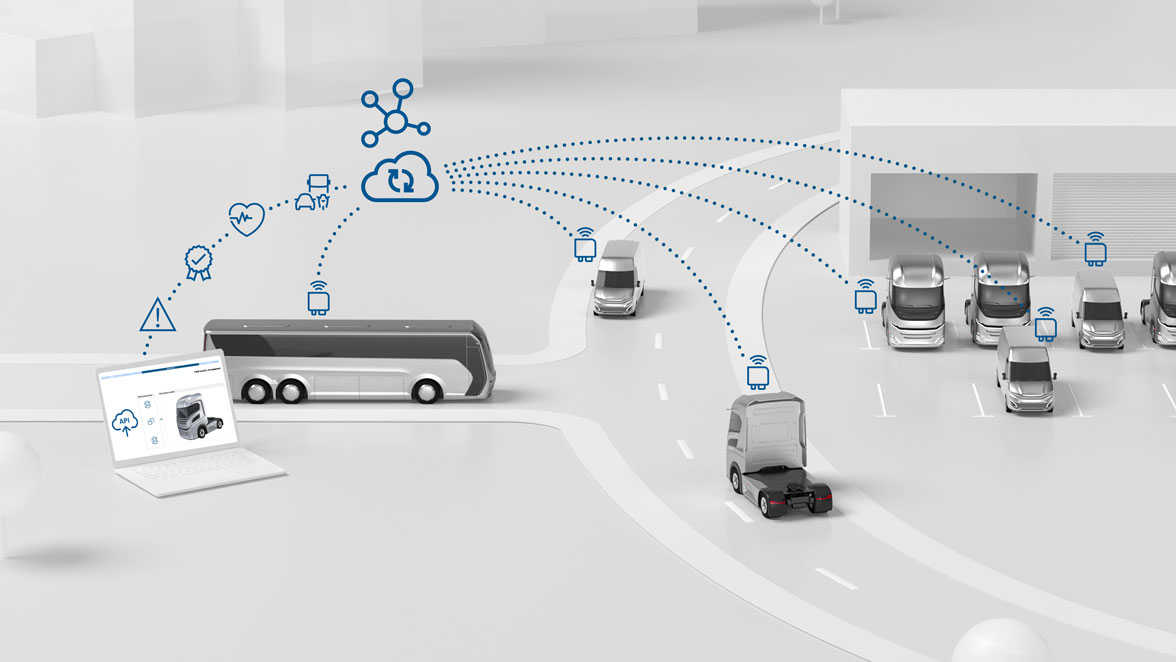
In-Vehicle Connectivity: The Future of Driving
Table of Contents
ToggleWhat Is In-Vehicle Connectivity?
In-vehicle connectivity refers to the integration of internet connectivity, wireless communication technologies, and smart technologies within vehicles. This allows cars to communicate with external devices, other vehicles, and the surrounding environment, providing real-time access to a range of services and functions.
Through connectivity platforms, vehicles can enable services such as navigation assistance, entertainment, safety features, remote vehicle management, and vehicle diagnostics. Essentially, in-vehicle connectivity creates a “smart car” that interacts with both the driver and the outside world.
Key Features of In-Vehicle Connectivity
1. Infotainment Systems
Modern vehicles come equipped with advanced infotainment systems that allow drivers and passengers to access various entertainment, navigation, and communication options. These systems include features such as:
- Apple CarPlay and Android Auto: These platforms allow seamless integration between a smartphone and the car’s infotainment system, providing easy access to apps, music, navigation, and voice commands.
- Touchscreen Displays: Vehicles are equipped with large, high-definition touchscreens that serve as the control hub for multimedia, climate control, and vehicle settings.
- Voice Recognition: Many systems now include advanced voice assistants, enabling drivers to make hands-free calls, change radio stations, or navigate using voice commands.
2. Advanced Driver Assistance Systems (ADAS)
ADAS refers to a suite of technologies designed to enhance driver safety and convenience through automation and real-time data exchange. These systems are integral to the connected vehicle ecosystem and include features like:
- Adaptive Cruise Control: Maintains a set speed while automatically adjusting to traffic conditions.
- Lane-Keeping Assist: Provides steering input to prevent the vehicle from unintentionally drifting out of its lane.
- Automatic Emergency Braking: Detects potential collisions and automatically applies the brakes to avoid accidents.
- Parking Assistance: Uses sensors and cameras to assist with parallel parking, angle parking, or backing up.
These systems rely on vehicle-to-vehicle (V2V) and vehicle-to-infrastructure (V2I) communication to operate, ensuring a safer driving experience by responding to environmental changes in real-time.
3. Vehicle-to-Everything (V2X) Communication
V2X communication is a key aspect of squeelee.com, enabling vehicles to communicate not only with each other but also with road infrastructure, pedestrians, and even traffic signals. This opens up a host of possibilities for improving road safety and traffic efficiency, including:
- Vehicle-to-Vehicle (V2V): Enables cars to exchange information about their location, speed, and direction to avoid collisions and improve traffic flow.
- Vehicle-to-Infrastructure (V2I): Allows vehicles to communicate with traffic lights, road signs, and toll booths to optimize traffic management and reduce congestion.
- Vehicle-to-Pedestrian (V2P): Alerts drivers to the presence of pedestrians in the vehicle’s vicinity, enhancing safety for both drivers and pedestrians.
V2X communication is a foundational technology for autonomous vehicles, allowing them to interact intelligently with the surrounding environment.
4. Remote Vehicle Management
In-vehicle connectivity allows for the remote control of various vehicle functions through smartphone apps or cloud-based platforms. These features include:
- Remote Start: Start or stop the car remotely, ensuring the cabin is at a comfortable temperature before getting in.
- Vehicle Location: Track the location of your car in real-time using GPS-based services.
- Vehicle Diagnostics: Monitor the health of your car by receiving alerts for potential issues, such as low tire pressure, engine problems, or required maintenance.
With remote connectivity, drivers can stay connected to their vehicles even when they are not in the car, providing added convenience and peace of mind.
5. Over-the-Air (OTA) Updates
With in-vehicle connectivity, car manufacturers can now send over-the-air (OTA) software updates to vehicles, eliminating the need for service center visits. These updates can improve the functionality of infotainment systems, update navigation maps, and even enhance vehicle performance. For example, Tesla is well-known for providing frequent OTA updates to improve its cars’ autopilot capabilities and user interfaces.
OTA updates also ensure that vehicles remain up-to-date with the latest safety features, regulatory compliance, and technological advancements without requiring physical intervention.
Benefits of In-Vehicle Connectivity
1. Improved Safety
In-vehicle connectivity enhances safety by enabling advanced driver assistance systems that help prevent accidents. Features such as automatic emergency braking, lane-keeping assist, and collision detection systems rely on real-time data to mitigate potential hazards. Additionally, V2X communication plays a crucial role in increasing situational awareness by allowing vehicles to interact with one another and the surrounding infrastructure.
2. Enhanced Convenience
Connected vehicles offer unparalleled convenience through smart features like voice recognition, hands-free calling, remote vehicle control, and seamless integration with smartphones. Drivers can manage everything from entertainment to navigation without taking their hands off the wheel. These features make the driving experience more comfortable, less stressful, and safer.
3. Optimized Driving Experience
With smart navigation systems, drivers can receive real-time traffic information, avoid congestion, and select the fastest routes. Additionally, advanced infotainment systems offer personalized recommendations, such as preferred music, podcasts, or navigation preferences, ensuring an enjoyable driving experience.
4. Cost Savings
In-vehicle connectivity can lead to cost savings in a number of ways. For example:
- Remote diagnostics allow drivers to catch maintenance issues early, avoiding expensive repairs down the road.
- Real-time data exchange can help reduce fuel consumption by providing traffic and route information that minimizes unnecessary stops or idling.
- OTA updates can keep the vehicle’s software optimized, potentially extending the car’s lifespan and reducing long-term service costs.
5. Environmental Benefits
With the ability to optimize driving behavior and reduce traffic congestion, in-vehicle connectivity can help reduce fuel consumption and lower emissions. For example, connected vehicles can communicate with traffic infrastructure to adjust speeds in a way that minimizes fuel waste, leading to more energy-efficient driving.
The Future of In-Vehicle Connectivity
In-vehicle connectivity is continuously evolving, and the future of connected cars is even more promising. Here are some emerging trends to look out for:
1. Autonomous Vehicles
As autonomous driving technology advances, connectivity will be crucial for enabling self-driving cars to communicate with each other and their environment. In the future, vehicles will be able to make decisions based on real-time data shared between vehicles, traffic signals, and road infrastructure, resulting in safer and more efficient transportation systems.
2. 5G Connectivity
The rollout of 5G networks will drastically improve in-vehicle connectivity, enabling faster data transfer and real-time communication between vehicles and their surroundings. This will enhance the performance of advanced driver-assistance systems (ADAS) and enable more responsive and reliable vehicle-to-everything (V2X) communication.
3. Enhanced Personalization
In the future, connected vehicles will offer even greater levels of personalization, learning individual driver preferences and adapting in real-time to provide a more tailored experience. From adjusting seat positions and cabin temperature to curating entertainment options, the car will act as a personalized extension of the driver’s lifestyle.
4. Integration with Smart Cities
As smart cities evolve, vehicles will be able to interact more seamlessly with urban infrastructure, including traffic lights, parking garages, and public transportation. This will result in smoother traffic flow, reduced congestion, and improved urban mobility.
5. More Sustainable Options
With the growing focus on sustainability, in-vehicle connectivity will also play a role in promoting electric vehicles (EVs) and other environmentally friendly technologies. Charging stations, energy-efficient routes, and real-time battery management will become more integrated into the connected vehicle ecosystem, supporting the adoption of green technologies.
Conclusion
In-vehicle connectivity is changing the way we drive, offering a wealth of benefits such as improved safety, convenience, and efficiency. With advanced infotainment systems, cutting-edge driver-assistance technologies, remote vehicle management, and seamless communication with surrounding infrastructure, connected vehicles are set to define the future of transportation. As 5G, autonomous driving, and smart city technologies continue to develop, in-vehicle connectivity will play an even more central role in shaping how we interact with our vehicles and the world around us.
For consumers, adopting connected cars means embracing an entirely new level of convenience and control, while for automakers, it presents new opportunities to innovate and enhance the driving experience. Whether you’re looking for a safer drive, more entertainment options, or enhanced fuel efficiency, in-vehicle connectivity offers something for everyone in today’s increasingly connected world.
More Stories
The Importance of Vehicle Diagnostics Tools for Modern Car Maintenance
In the ever-evolving automotive industry, vehicle diagnostics tools have become essential for maintaining and repairing modern vehicles. These tools allow...
The Importance of Vehicle Diagnostics Tools for Modern Car Maintenance
In the ever-evolving automotive industry, vehicle diagnostics tools have become essential for maintaining and repairing modern vehicles. These tools allow...
The Role of Augmented Reality in Automotive: Transforming the Industry
Augmented reality (AR) is one of the most exciting technological advancements transforming the automotive industry. By overlaying digital information onto...
Car Safety: Essential Tips for Protecting Yourself and Your Passengers on the Road
1. Why Car Safety Matters Car safety is about more than just avoiding accidents—it's about minimizing the risks associated with...
Enhancing Your Driving Experience with Car Accessories
Introduction to Car Accessories Car Accessories are essential additions that can enhance both the functionality and appearance of your vehicle....
In-Car Voice Assistants: The Future of Hands-Free Driving
1. What Are In-Car Voice Assistants? In-car voice assistants are artificial intelligence (AI)-powered systems integrated into vehicles that enable drivers...


